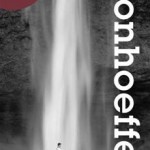New Research: Church of England and the Early Cold War, 1945-48
ACCH Quarterly Vol. 15, No. 3, September 2010 New Research: Church of England and the Early Cold War, 1945-48. By Tina Alice Hansen,Trinity College, Oxford University Tina Alice Hansen is a D.Phil. Candidate at Trinity College, Oxford University, studying in the…
Conference Announcement: Intellectual Freedom and the Church
ACCH Quarterly Vol. 15, No. 3, September 2010 Conference Announcement: Intellectual Freedom and the Church: A Kirchliche Zeitgeschichte/Contemporary Church History Symposium, November 19-21, 2010, George Bell House, Chichester Cathedral. By Andrew Chandler, University of Chichester The George Bell Institute of the…
Conference Announcement: Secularization and the Transformation of Religion in the U.S. and Germany after 1945
ACCH Quarterly Vol. 15, No. 3, September 2010 Conference Announcement: Secularization and the Transformation of Religion in the U.S. and Germany after 1945, March 17-19, 2011, German Historical Institute, Washington, D.C. By Mark Edward Ruff At first glance, the religious…

Book Note: Victims of Nazism: Bonhoeffer and Jägerstätter
ACCH Quarterly Vol. 15, No. 2, June 2010 Book Note: Victims of Nazism: Bonhoeffer and Jägerstätter By John S. Conway, University of British Columbia Keith Clements, The SPCK Introduction to Bonhoeffer (London: SPCK, 2010), 106 pp. ISBN: 978-0-281-06086-3. Jeffrey C. Pugh,…
Article Note: Research on German Free Churches and Sects
ACCH Quarterly Vol. 15, No. 2, June 2010 Article Note: Research on German Free Churches and Sects By John S. Conway, University of British Columbia and Kyle Jantzen, Ambrose University College Andrea Strübind, “German Baptists and National Socialism,” Journal of European Baptist…
Article Note: “Holy See Documents From World War II Go Online. Researchers Welcome Availability of Pius XII Information”
ACCH Quarterly Vol. 15, No. 2, June 2010 Article Note: “Holy See Documents From World War II Go Online. Researchers Welcome Availability of Pius XII Information” Zenit, March 25, 2010. By Kyle Jantzen, Ambrose University College Scholars have long desired…
Conference Report: Third Annual Powell and Heller Family Conference on Holocaust Education
ACCH Quarterly Vol. 15, No. 2, June 2010 Conference Report: Third Annual Powell and Heller Family Conference on Holocaust Education, March 18-20, 2010, Pacific Lutheran University Tacoma, WA. By Robert P. Ericksen, Pacific Lutheran University On March 18-20, 2010, Robert…
Conference Report: Eugenio Pacelli als Nuntius in Deutschland
ACCH Quarterly Vol. 15, No. 2, June 2010 Conference Report: Eugenio Pacelli als Nuntius in Deutschland, March 24-26, 2010, Münster,Germany. By Mark Edward Ruff, St. Louis University The most controversial pontiff of the 20th century was the focus of a three-day…
Conference Report: “Understanding Religious Freedom in Germany, Poland and the United States”
ACCH Quarterly Vol. 15, No. 1, March 2010 Conference Report: “Understanding Religious Freedom in Germany, Poland and the United States,” German Studies Association Conference, Washington, DC, October 11, 2009. By Robert P. Ericksen, Pacific Lutheran University This session, organized by Professor…
Article Note: Heath A. Spencer, “Kulturprotestantismus and ‘Positive Christianity’: A Case for Discontinuity”
ACCH Quarterly Vol. 15, No. 1, March 2010 Article Note: Heath A. Spencer, “Kulturprotestantismus and ‘Positive Christianity’: A Case for Discontinuity.” Kirchliche Zeitgeschichte, Heft 2/2009: 519-549. By John S. Conway, University of British Columbia The latest issue of Kirchliche Zeitgeschichte commemorates…
Article Note: Ulrike Ehret, “Catholicism and Judaism in the Catholic Defence against Alfred Rosenberg, 1934-1938: Anti-Jewish Images in an Age of Race Science”
ACCH Quarterly Vol. 15, No. 1, March 2010 Article Note: Ulrike Ehret, “Catholicism and Judaism in the Catholic Defence against Alfred Rosenberg, 1934-1938: Anti-Jewish Images in an Age of Race Science.” European History Quarterly, Vol. 40 No. 1 (2010): 35-56….
Conference Announcement: Third Annual Powell and Heller Family Conference on Holocaust Education
ACCH Quarterly Vol. 15, No. 1, March 2010 Conference Announcement: Third Annual Powell and Heller Family Conference on Holocaust Education, March 18-20, 2010, Pacific Lutheran University. Host: Robert P. Ericksen, Kurt Mayer Professor of Holocaust Studies, Pacific Lutheran University Pacific…